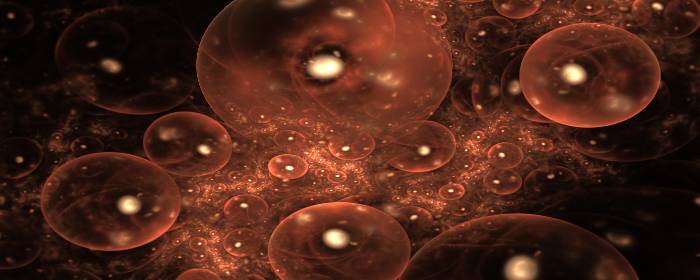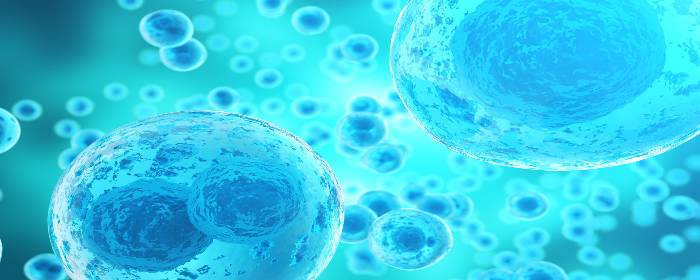
by admin | Aug 21, 2019 | Adipose, Aesthetics, Hair Regrowth
Alopecia, better known as hair loss, is a cosmetic problem. People do not need hair on their scalp to survive. Nonetheless, people with thinning hair or hair loss often endure considerable distress and suffering. Hair loss can cause low self-esteem, symptoms of depression, and a diminished quality of life. So while hair loss may be a simple cosmetic, strictly speaking, many people with alopecia struggle with an ongoing and serious problem.
Unfortunately, there are few effective treatments for hair loss. The two main medical treatments for hair loss are minoxidil and finasteride. Finasteride is generally only useful for male pattern baldness. Both men and women can use minoxidil, but it, too, is only partially effective. Various surgeries can be used to treat hair loss such as hair transplantation, scalp reduction, and scalp expansion, but patient satisfaction rates for these procedures are fairly low.
Stem cells that have been derived from fat tissue (i.e. adipose) secrete a number of beneficial chemicals called cytokines. These cytokines are important for wound healing and new blood vessel growth (i.e. angiogenesis). Cytokines released by adipose-derived stem cells are also able to stimulate hair follicles and induce the growth of hair. Based on these successes in the laboratory, dermatologists in Japan have used the substances secreted by adipose-derived stem cells to help people with hair loss.
Drs. Fukuoka, Narita, and Suga published a report detailing their successes in treating hair loss with proteins extracted from adipose-derived stem cells. A single hair loss treatment involves making a number of very small injections into the scalp. Each patient usually needs 6 to 8 treatment sessions, given once per month.
The doctors have performed this stem cell-based hair loss treatment on more than 1,000 patients and they have not encountered a single allergic reaction or infection. Indeed, no serious complications have occurred in their patients.
Not only is this stem cell-based hair loss treatment safe, but it is also apparently effective, as well. Patients have new growth of thin hair after two or three treatments, but this is minor and can usually only be detected by the doctors. After the fourth or fifth treatment, however, patients often notice new hair growth. By the sixth treatment, most patients can easily see new hair growth.
To confirm the effectiveness of their treatment, the doctors performed a half-side comparison test. In this test, they injected the stem cell-based hair loss treatment on one side of the scalp and injected saline on the other. The side of the scalp that received the stem cell extract had significantly more hair growth than the saline-treated side. This is strong evidence that the treatment is effective.
Reference: Fukuoka H. et al. (2017). Hair Regeneration Therapy: Application of Adipose-Derived Stem Cells. 2017;12(7):531-534.

by admin | Mar 23, 2019 | Hyperbaric Oxygen Therapy, Parkinson's Disease, Stem Cell Therapy, Studies
Parkinson’s disease is widely known as a neurological condition that causes motor symptoms. Typically, patients with Parkinson’s disease have pill-rolling tremor, cogwheel rigidity, and a shuffling gait. However, about half of all patients with Parkinson’s disease also have psychiatric symptoms such as anxiety and depression. It can be challenging for patients and caregivers to deal with Parkinson’s disease, but if anxiety and depression are also present, it can make matters worse. When psychiatric symptoms occur, they can make Parkinson’s disease more difficult to treat, increase the burden on caregivers, and greatly reduce quality-of-life for patients.
One of the things that make psychiatric symptoms so difficult to treat in patients with Parkinson’s disease is that doctors have limited treatment options. The antidepressants that they would normally use to treat depression and anxiety can make motor symptoms of Parkinson’s disease worse. People with Parkinson’s disease often struggle with sleep disturbances, and typical antidepressants can make sleep problems worse, too. Not surprisingly, many patients with Parkinson’s disease suffer from depression and anxiety and never find adequate treatment.
Physicians recently reported their experience with a patient with Parkinson’s disease who they treated with hyperbaric oxygen. The man had struggled with Parkinson’s disease for 1.5 years and had slipped into a severe depression. He had lost interest in pleasurable activities, was only sleeping about 2 to 3 hours each night, unintentionally lost over 40 pounds, and was having thoughts of suicide. He also had significant anxiety issues that made his life very difficult. Regular drug and psychotherapy treatments for anxiety and depression did not work for this man, so physicians were left with few options.
The man with Parkinson’s disease, severe depression, and anxiety underwent 30 days of hyperbaric oxygen treatments. He inhaled pure oxygen in a hyperbaric chamber for 40 minutes per session at 2 atm of pressure. In as little as four days of hyperbaric oxygen treatment, the man was sleeping better and longer than he did before treatment. His mood has also improved.
After 30 days of hyperbaric oxygen treatments, the man was able to sleep for 8 to 10 hours a night. Not only did his psychiatric symptoms improve, but his Parkinson’s disease symptoms also improved. While he still had Parkinson’s disease symptoms after hyperbaric oxygen treatment, the symptoms had improved substantially.
When physicians followed up one month after treatment had ended, the patient was still sleeping through the night, his mood was good, and he did not need assistance with his activities of daily living.
It is important to remember that this is a case study, the results of a single patient. Nevertheless, the improvements in both Parkinson’s disease and severe symptoms of anxiety and depression are incredibly impressive. For this man, at least, hyperbaric oxygen therapy had a substantial positive effect in his life where other treatments had failed.
Patients can also combine Hyperbaric Oxygen Therapy with Regenerative Medicine. Regenerative Medicine is an alternative option to help manage the symptoms of Parkinson’s Disease. The stem cells have the potential to replicate and repair numerous cells of the body, including those damaged by Parkinson’s. These advancements in the treatment of Parkinson’s Disease work to fully regenerate missing or damaged tissue that the body would not ordinarily regrow.
Call your dedicated Care Coordinator at 800-531-0831 for more information.
Reference: Xu, Jin-Jin et al. (2018). Hyperbaric oxygen treatment for Parkinson’s disease with severe depression and anxiety. Medicine. 2018 Mar; 97(9): e0029.

by admin | Mar 22, 2019 | Stem Cell Research, Cannabinoid, Stem Cell Therapy
Over 1 million patients worldwide have been treated with adult stem cells and have benefited from them. And nearly 20 000 adult stem cell transplants were performed in the United States in 2014 alone! How is that possible? What are stem cells? What do they do to your body? And why are so many benefiting from them? We take a look at these important questions surrounding the benefits of stem cells, as well as how CBD can help you get the most benefits from stem cells.
What Are Stem Cells?
Stem cells are a very special kind of human cells. They are cells of the body and are therefore somatic cells, found in your bone marrow and fat cells. They are a part of your body’s natural repair process. But why are they so special? Well, they have the ability to develop into many different cell types. This can range from anything from muscle, cartilage and even bone! Stem cells can divide and become differentiated, and are therefore used as a therapy called stem cell therapy. Stem cell therapy involves using a patient’s own stem cells to repair damaged tissues. When an organism grows, the stem cells specialize and take on specific functions, including skin, nerves, blood, muscle, and liver.
Because of their magical transformative powers, they have the potential to treat a number of diseases, including diabetes, Parkinson’s and even cancer. They also have the potential to treat a number of serious injuries, from a damaged knee, to even treating spinal cord injury! Eventually, they may even be used to regenerate entire organs, decreasing the need for organ transplants. Now that we know what stem cells are and how they work, let’s have a look at five of their biggest benefits.
1. Avoid Invasive Surgery and Related Risks
One of the biggest benefits of stem cells and using them in stem cell therapy is that it allows patients who would possibly have required heavy surgery to not have any such invasive surgery. Stem cell therapy uses material already in the patient’s body, which makes it minimally invasive and also cuts out the need for an overly stressful, invasive surgical procedure. Most stem cell therapy is performed as an outpatient procedure, i.e. you can just have it done in the doctor’s office! No need for an overnight hospital stay and those ridiculously high associated medical costs.
Your doctor will first conduct a bone marrow aspiration, in which he removes stem cells from an area of the body, such as the hipbone, through a long needle. These cells are then delivered to the area of injury. Once there they work their magic to create healthy new tissue to replace a damaged muscle, tendon, ligament, cartilage or bone. They become healthy new cells that your body desperately needs.
2. Minimal Procedure & Recovery Time
One of the greatest stem cell benefits is the minimal amount of time involved in the whole therapy, from the actual procedure to the recovery time required afterward. Procedures generally last from two to five hours, depending on the type of cell treatment being performed. After the minor procedure, your activity level may be a bit limited for the first week. This is merely to let the stem cell therapy process to work uninterrupted and without any possible inflammation. After just seven days you should be able to return to your normal activity! Your treatment will include some monitoring after the treatment, to ensure everything is working as it should.
3. Can Offer Pain Relief
Stem cell therapy is highly sought out by patients who experience chronic pain. As it should be! Because of stem cells’ ability to restore and regenerate, being used in pain management is a logical step. The use of stem cell therapy is being studied for a number of chronic pain conditions, particularly pain in the knees, hips, elbows, and back. Stem cell therapy can offer pain relief in the way that it reduces the inflammation which causes chronic pain. It also helps to heal regenerative conditions that lead to pain, such as arthritis. Promising results have been found in research into the use of stem cells to reduce arthritis pain. As every patient and their condition is different, long-lasting pain relief can never be guaranteed by any doctor.
4. No Risk of Rejection
When you receive stem cells from a donor, there’s always the risk that your body will reject them. Because the stems are coming from another person’s body, many complications can arise. The most common complication is called graft-versus-host disease. This is when blood cells formed from the donor’s stem cells believe your own cells are foreign and attack them. On the other hand, harvesting stem cells extracted from your own body to generate new cells and tissues means there is no risk of rejection!
5. Potential to Discover New Treatments
Because of the nature of stem cells, the possibilities for treating new diseases and finding new cures is endless. Stem cell therapy research provides great potential for discovering treatments and cures to a variety of diseases. Advanced research is going as far as limbs and organs being grown in a lab from stem cells, which are then used in transplants. With stem cells, scientists are able to test millions of potential drugs and medicine, without the use of animal or human testers.
How Can CBD Help with Stem Cell Treatment?
We’ve seen how amazing stem cells are. Now let’s have a look at how much more amazing they can be when combined with the effects of CBD! According to results from multiple trials, cannabidiol, or CBD, can help increase the number of stem cells growing within the body. CBD has even shown to positively contribute to the movement of the stem cells within the body. They can then do what they do best – help heal the body and reduce pain.
Nearly 20% of those who went through hematopoietic stem cell transplant (HSCT) used cannabis. Not only was it used to treat their physical and emotional pain, but it was also used in the hope that it will contribute to the replacement of bone marrow that has been destroyed by cancer. Because both CBD and stem cells have been seen to reduce pain, combined the possibilities for better treatments are endless.
How Can I Experience the Benefits of Stem Cells?
You’ve heard about the many benefits of stem cells. You’ve heard how popular it is. And you’ve heard the vast amount of injuries, diseases, and pain that it can treat. Perhaps it’s about time you had a look at it as a treatment for your condition. Whether you’re looking for an alternative treatment to your sports injury, your multiple sclerosis or your chronic fatigue syndrome, we’re here to help you along the way.
Get in touch with us to see if you are a candidate for Stem Cell Therapy. Also, check out our website shop to see available products.

by admin | Mar 14, 2019 | Spinal Cord Injury, Stem Cell Research
Traumatic spinal cord injury is a potentially devastating event in which the nerves and nerves cells in the spinal cord are damaged. In the United States, more than a quarter of a million people struggle with the lifelong consequences of traumatic spinal cord injury. The consequences of spinal cord injury vary from person to person, but each person usually must deal with several complications. Many people with spinal cord injury are paralyzed. They are at risk for pressure ulcers, blood clots in the legs, urine and bowel problems, and sexual dysfunction. Despite being paralyzed, as many as two-thirds of patients with spinal cord injury experience chronic pain, which is difficult to treat. Spinal cord injury can also affect how the heart and lungs function.
There are no specific treatments for spinal cord injury. If the injury is treated early, steroids and spine surgery/neurosurgery can help reduce long-term complications. In some cases of incomplete spinal cord injury, physical therapy can help people regain some degree of function. For the most part, treatment is aimed at reducing symptoms rather than curing the injury. Treating the symptoms helps make the disease less of a burden, but is by no means the same as a cure.
Because spinal cord injury has such long-lasting and devastating effects, researchers are actively pursuing ways to heal injured spinal cord nerve cells. One possible way to do this is through the use of stem cells.
Liu and coauthors conducted a clinical trial on 22 patients with spinal cord injury. The doctors collected mesenchymal stem cells from umbilical cord tissue that would normally be discarded as medical waste after delivery. They purified the stem cells and then used them to treat the injured patients. Astoundingly, stem cell treatment was effective in 13 of 22 patients. Patients who achieved benefit from stem cells enjoyed the return of motor function, sensory function, or both. All patients who were treated with stem cells reported less pain, improved sensation, better movement, and a greater ability to provide self-care. Importantly, the treatment did not cause any notable side effects for up to three years after treatment.
These clinical trial results are truly remarkable, but it is important to note that the number of patients treated was small and further testing is needed. Nevertheless, the researchers concluded that treatment with mesenchymal stem cells derived from umbilical cells is safe, and can improve function and quality of life in most patients with spinal cord injury.
Reference: Liu et al. (2013). Clinical analysis of the treatment of spinal cord injury with umbilical cord mesenchymal stem cells. Cytotherapy. 2013 Feb;15(2):185-91.

by admin | Jan 27, 2019 | Exosomes, Heart Failure, Kidney Disease, Stem Cell Research, Stem Cell Therapy, Stroke, Umbilical Stem Cell
Tissue injury is common to many human diseases. Cirrhosis results in damaged, fibrotic liver tissue. Idiopathic pulmonary fibrosis and related lung diseases cause damage to lung tissue. A heart attack damages heart tissue, just as a stroke damages brain tissue. In some cases, such as minor tissue injury, the damaged tissue can repair itself. Over time, however, tissue damage becomes too great and the organ itself can fail. For example, long-standing cirrhosis can cause liver failure.
One area of active research is to find ways to protect tissue from injury or, if an injury occurs, to help the tissue repair itself before the damage becomes permanent and irreversible. Indeed, tissue repair is one of the main focuses of regenerative medicine. Likewise, one of the most promising approaches in the field of regenerative medicine is stem cell therapy. Researchers are learning that when it comes to protecting against tissue injury and promoting tissue repair, exosomes harvested from stem cells are perhaps the most attractive potential therapeutic.
Why are stem cell exosomes so promising? Exosomes are small packets of molecules that stem cells release to help the cells around them grow and flourish. While one could inject stem cells as a treatment for diseases (and they certainly do work for that purpose) it may be more effective in some cases to inject exosomes directly. So instead of relying on the stem cells to produce exosomes once they are injected into the body, stem cells can create substantial amounts of exosomes in the laboratory. Exosomes with desired properties could be concentrated and safely injected in large quantities, resulting in a potentially more potent treatment for the disease.
Indeed, researchers have shown that extracellular vesicles (exosomes and their cousins, microvesicles) can be collected from stem cells and used to treat a variety of tissue injuries in laboratory animals.
Just a few examples of this research:
- Exosomes from umbilical cord-derived mesenchymal stem cells were able to accelerate skin damage repair in rats who had suffered skin burns.
- Exosomes from the same type of stem cell protected the lungs and reduced lung blood pressure in mice with pulmonary hypertension.
- Exosomes from endothelial progenitor cells protected the kidney from damage caused by a lack of blood flow to the organ.
In this growing field of Regenerative Medicine, research is constant and building as new science evolves from stem cell studies. Researchers are closing in on the specific exosomes that may be helpful in treating human diseases caused by tissue injury.
Reference: Zhang et al. (2016). Focus on Extracellular Vesicles: Therapeutic Potential of Stem Cell-Derived Extracellular Vesicles. International Journal of Molecular Sciences. 2016 Feb; 17(2): 174.






 St. Petersburg, Florida
St. Petersburg, Florida
